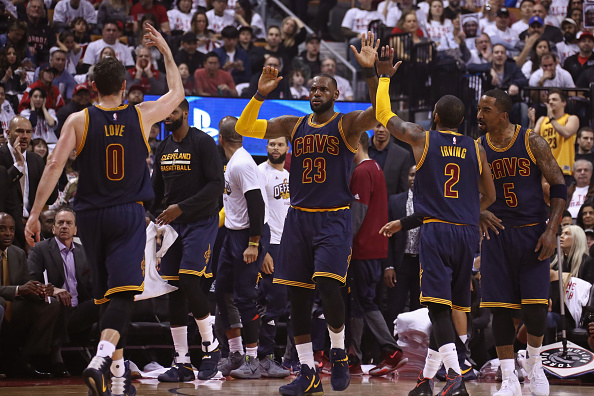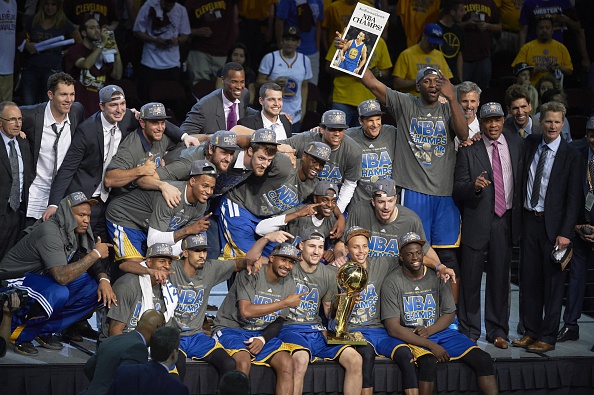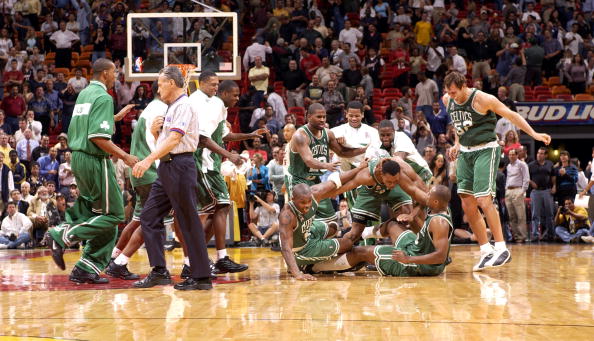
The Parity in the Playoffs
One of the reasons why a capitalistic system of governance is preferred over its socialistic alternative is because of one aspect: consistency. You know what’s going to happen from the outset, the rich get richer, there is a divide of culture and education permeates through society and no one gets overthrown, only replaced. The tops are at the top, the bottoms at the bottom and the middle class struggle to become richer or fall into poverty, depending on how you like your glass filled.
It is odd then, that all we’ve heard since the NBA Playoffs have started is how boring it’s gotten. From players to analysts and everyone in between, the 2017 Playoffs have been a subject of criticism of how predictable the games have been.
This could likely be chalked down to a bunch of reasons, the fact that the two real No. 1 seeds (that’s right Celtics fans, I said it) have glided through their eight matches like a hot knife through butter, that 15 of the 16 games in the Second Round have been decided by double digits leads or that with the exception of the 5th seed Jazz beating the 4th seed Clippers (Not really, that was expected as well, the Western Conference 4th seed has lost the series to the 5th seed for six consecutive seasons now), there’s been no real upset in the Playoffs so far.
All of this begs the question we’ll answer today, has the league really become non-competitive?
The No. 1 seeds
I’m not going to act like the Cavaliers and the Warriors aren’t playing on a different planet entirely as compared to the other teams in the league right now.
Both teams had different ways of doing it, the Warriors added 4 Time Scoring Leader and former MVP Kevin Durant to their already stacked, record-breaking 73-win team over the offseason while the Cavs chose to fill their bench with a whole new set of veterans (Deron Williams, Kyle Korver and Andrew Bogut) who took almost insulting paychecks in the pursuit of a ring.
With this, the Cavaliers now have seven players on their roster who are former Top-5 draft picks (LeBron, Irving, Thompson and Love round out the list), largely in order to put up a fight against the Warriors in what will be their third straight meeting in the NBA Finals. But should this domination by the No. 1 seeds be a surprise?
Over the past 33 years of the NBA Playoffs (when the league expanded to 16 teams in the Playoffs), a scarcely believable 19 of the 20 Finals featured at least one top-seed team. In the past 33 Finals, 22 of the champions (66%) were the first seed in their conference.
11 of those Finals were a showdown of the two top-seeded teams. In fact, the only teams considered sub-average (Below 3 seed) who have ever made the Finals are: the ‘95 6-seed Rockets (won the championship that year), the ’99 8-seed Knicks, the ’06 4-seed Mavericks (who won 60 games, which would make them the 3rd seed in THE LEAGUE this season) and the 2010 Celtics.
However
How did the Cavaliers and Warriors get so dominant in the first place? The answer is, through sheer determination, hard work and smarts.
It wasn’t very long ago when the Warriors and the Cavaliers were terrible teams, and I mean downright historically pitiful. LeBron James’ home city of Cleveland waited 52 years before they won a championship of any sort (this extends to basketball, football or baseball), leading the New York Times to dub Cleveland as “The Most Cursed Sports City in America) in 2015.
In fact, the last time the citizens of Cleveland, Ohio had anything to celebrate about, was in 1964, when the local football team Cleveland Browns won an NFL Championship. In comparison to the Warriors, at least the Cavs made the playoffs once in a while.
The Warriors actually hold the record for the third worst Post Season Drought for a team in NBA history, not making the Playoffs for 12 consecutive seasons, from 1994 to 2006. And if you counted that one season with the ‘We Believe’ Warriors out, the drought continued for another six years, all the way to 2011 which would give them the undisputed title of Longest Drought of the sort.
They were so poor that the 2015 Warriors Championship was the teams’ first title in 40 years, so long ago that the man who took them to that previous championship, 1975 Finals MVP Rick Barry, is now 73 years old and is the current commentator for the Golden State Warriors.
The 2015 Championship was also only the fourth for the Warriors in franchise history and to put that into perspective, the Warriors have existed as a team since 1946, a full year before India got its independence from the British.
The Warriors assembled their Championship winning team through smart picks and clever drafting, their core of Steph Curry (7th pick in the 2011 draft), Klay Thompson (11th pick in the 2011 draft) and Draymond Green (35th pick of the 2012 draft) were a product of organic progression, through personnel selection and player development.
The Cavaliers, on the other hand, kind of cheated to get their current core of LeBron, Irving and Love. After not winning anything with Cleveland for seven years, LeBron packed up and moved to Miami in 2010, to play alongside Dwayne Wade and Chris Bosh in the hopes of winning a few rings.
This destroyed the Cavaliers who ended up with one of the worst records in the NBA the next year, losing 63 games out of a possible 82 (a 23%-win percentage) and at one point during the 2010-11 season, losing 26 straight games between December and February.
A product of this tanking, however, was that Cleveland was awarded the 1st Overall Pick next year, which eventually became Kyrie Irving. That didn’t affect the losses though as the Cavaliers would end up as a sub .400 team, ending up with more 1st Overall Picks till James came back in 2014-15 season, who then immediately forced the front office to trade Anthony Bennet, the 2013 First Overall pick and Andrew Wiggins, the 2014 First Overall pick to Minnesota in exchange for Kevin Love.
It’s easy to suggest that the league has gotten boring because of how the teams have dominated for the past three years, but it’s something of a miracle when you consider that this run is the most recent string of success for the two teams after more than four decades.
Who’s been winning in the NBA if not them?
This is the part of the article when you realise how much of a fresh breath the Cavaliers and the Warriors are for the league at large. For as bad as the Warriors have been since 1946, their four championships (1947, 1956, 1975 and 2015) still put them fifth highest all-time in the NBA for Championships won.
So, who’s in front of them?
Since the league’s inception 70 years ago, a whopping 33 championships have been won by just two teams, the Boston Celtics (17) and the Los Angeles Lakers (16). That’s two teams, dominating the NBA for more than three decades, winning almost half of all championships ever handed out.
These teams are followed by the Chicago Bulls (6) and the San Antonio Spurs (5), that’s 44 of a possible 70 Championships won by four teams in of a pool of thirty (60% of all Championships have been won by just 7.5% of teams).
This disparity of the NBA becomes even more apparent when you take into consideration that 12 of 30 teams (40%) have never even won a championship in the 70 years of the league and seven of these 12 franchises have never been to the NBA Finals.
In fact, the past 31 Championships before the Warriors and the Cavaliers stepped onto the scene, were shared by only eight teams, the Lakers (8), the Bulls (6), the Spurs (5), the Celtics (3), the Pistons (3), the Heat (3), the Rockets (2) and the Mavericks (1).
Conclusion
I will wholeheartedly concur that the Cavaliers and the Warriors are dominant teams and the only real risk of them being thrown out of the Playoffs is when they face each other, but even that isn’t likely to last.
Aside from the cap space issues, which almost ensures that neither the Warriors nor the Cavs will be able to afford their core in the long run, an armada of small market teams are ready to usurp power from the Cavs and Warriors.
Some of the most promising young teams heading into next year are from smaller markets, namely the Milwaukee Bucks led by the 22-year-old Giannis Antetokounmpo and 20-year-old veteran Thon Maker, the Utah Jazz with supermodel-and-basketball player Gordon Hayward, the Minnesota Timberwolves led by their young Big Three of Andrew Wiggins, Karl-Anthony Towns, Zach Lavine and the New Orleans Pelicans with the twin tower supergroup of DeMarcus Cousins and Anthony Davis.
]Some other notable mentions are the Portland Trailblazers, with the recently acquired Jusuf Nurkic and the Philadelphia 76’ers, championed by the Process trusting Joel Embiid, all of which suggests that ten years down line, when James enters his prime and veteran Maker retires, the next dynasty could come from a state that wholeheartedly voted for Donald Trump.



